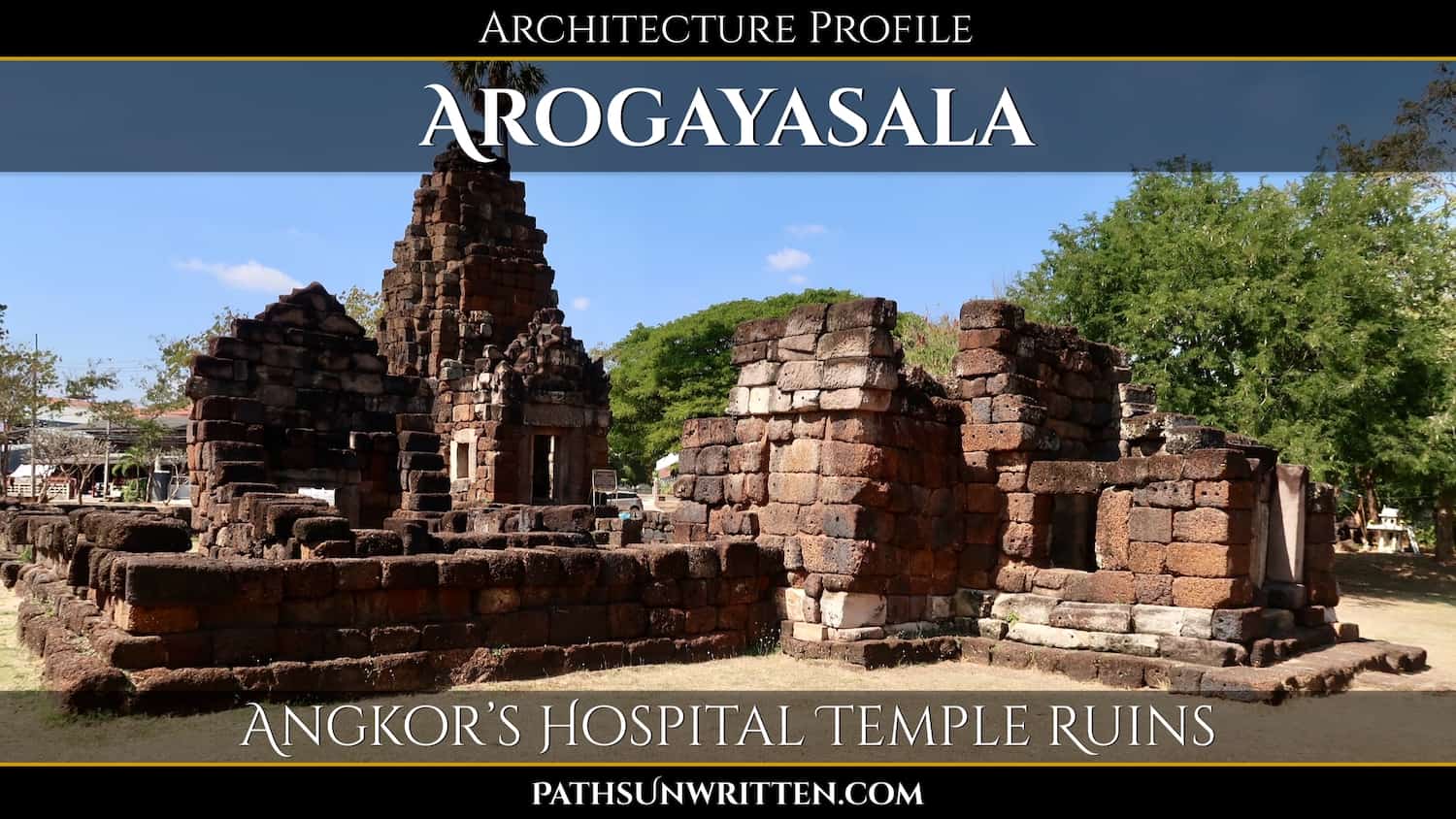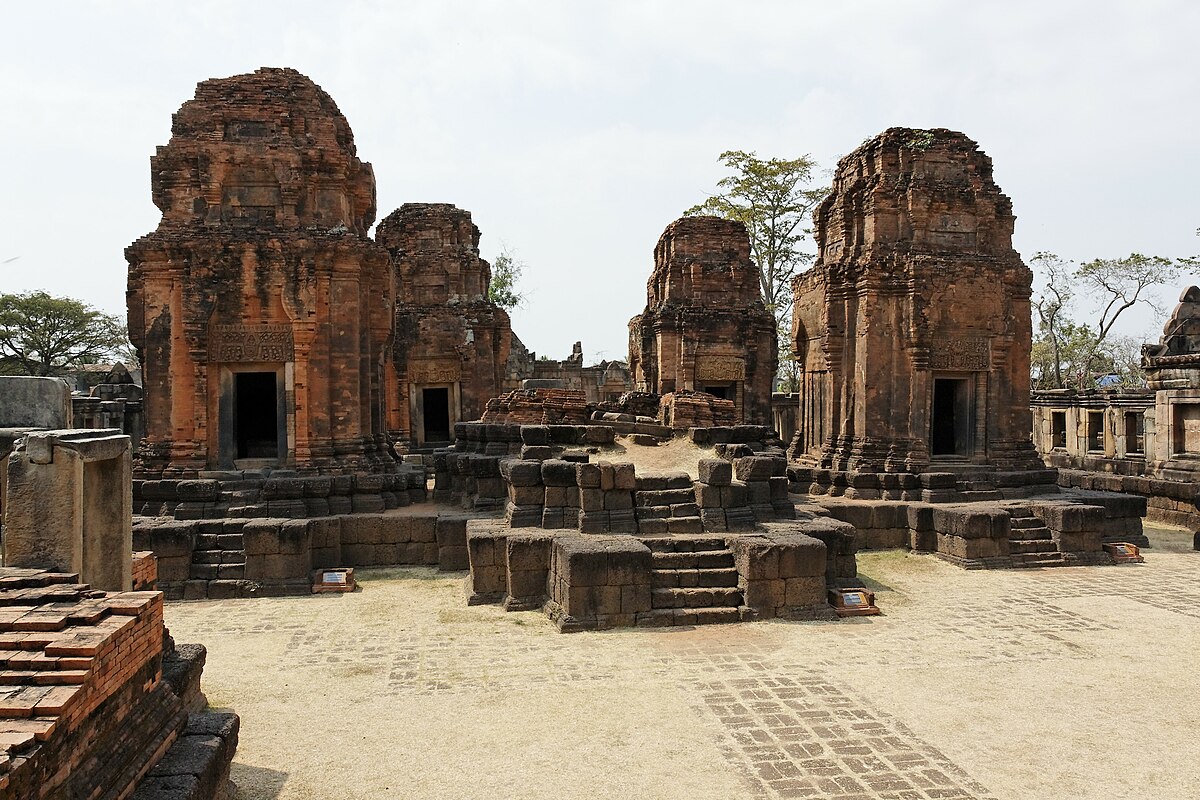The Prasat Day: Prasat Khok Ngio - Prasat Phanom Rung - Prasat Muang Tam.
Continued from
 www.gt-rider.com
www.gt-rider.com
Searching Google Maps at the start of the day I got excited, for Prasat Phanom Rung & Prasat Muang Tam popped up.
I first visited these 2 ruins in 1979 & again in 1992 so was keen to revisit them, armed with a bit more info & a camera.
Prasat Khok Ngio
It is located 25 kms south of Nang Rong / 78 kms S-W from Buriram.

Prasat Khok Ngiu is one of 102 Arogayasalas built by King Jayavarman VII (r. 1181-1218) throughout his Khmer kingdom.

Arogayasalas were hospitals / health care centres built by King Jayavarman.

They generally followed a standard format with a laterite enclosure wall, an east-facing gopura, a single prang shrine in the center, a Bannalai library southeast of the prang plus a square, stepped baray pool northeast of the enclosure wall.
Source PathsUnwritten.









See also
An excellent concise guide. I wish knew of this brilliant information site before I set off!

 pathsunwritten.com
pathsunwritten.com


 www.facebook.com
www.facebook.com
Location:

 maps.app.goo.gl
maps.app.goo.gl
Prasat Phanom Rung
Located 46 kms from Prasat Khok Ngio / 65 kms from Buriram.
Continued from
Chiang Khong – Lower Esarn Meander July 2024. Part 13 Korat - Rang Nong.
After 2 nights in Korat, it was time to tick off a few other Khmer ruins boxes. There are too many & you never have enough time of course. Google Maps was my guide, searching for Khmer ruins nearby, sorted by distance with a quick look at a few photos plus the reviews, were the deciding factors...
Searching Google Maps at the start of the day I got excited, for Prasat Phanom Rung & Prasat Muang Tam popped up.
I first visited these 2 ruins in 1979 & again in 1992 so was keen to revisit them, armed with a bit more info & a camera.
Prasat Khok Ngio
It is located 25 kms south of Nang Rong / 78 kms S-W from Buriram.
Prasat Khok Ngiu is one of 102 Arogayasalas built by King Jayavarman VII (r. 1181-1218) throughout his Khmer kingdom.
Arogayasalas were hospitals / health care centres built by King Jayavarman.
They generally followed a standard format with a laterite enclosure wall, an east-facing gopura, a single prang shrine in the center, a Bannalai library southeast of the prang plus a square, stepped baray pool northeast of the enclosure wall.
Source PathsUnwritten.
See also
An excellent concise guide. I wish knew of this brilliant information site before I set off!

Architecture Profile: Arogayasala, Angkor's Hospital Temple Ruins
Historical profile on arogayasalas, the formidable Khmer hospital temples whose ruins dot landscapes from the Angkor capital city to its remote frontiers.
 pathsunwritten.com
pathsunwritten.com

- Rest - Archaeology Magazine - September/October 2021
As part of an effort to win his subjects’ loyalty, the Khmer king Jayavarman VII, […]
archaeology.org

Arogyasala
Arogyasala. 1,391 likes · 1 talking about this. All about the legacy of public healthcare systems and services for humanity that were implemented during the probably greatest reign of the King...
 www.facebook.com
www.facebook.com
Location:
Prasat Baan Khok Ngiu · FP7H+93H, Pakham, Pakham District, Buri Ram 31220, Thailand
âââââ · Historical landmark
 maps.app.goo.gl
maps.app.goo.gl
Prasat Phanom Rung
Located 46 kms from Prasat Khok Ngio / 65 kms from Buriram.
Last edited:

